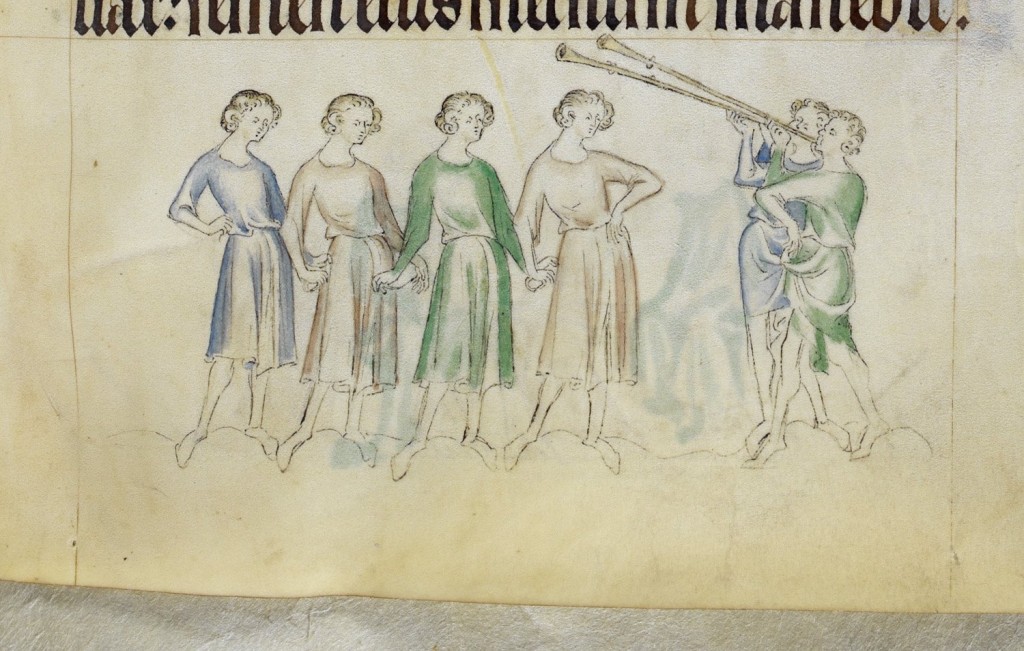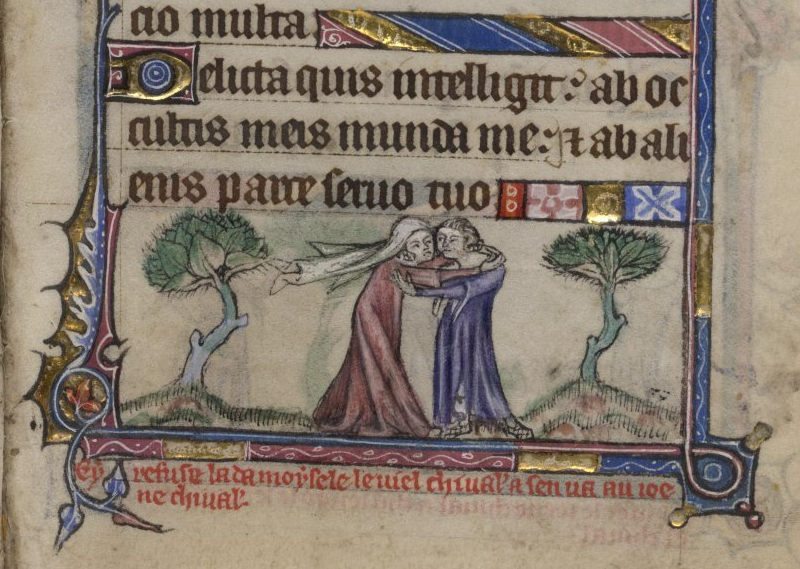In May 1482, a harried Richard Cely wrote from London to his younger brother George, who was working in Calais. Three months earlier, in the midst of Shrovetide celebrations (a time of raucous good cheer before the privations of Lent), he had had a sexual encounter with their servant, Em:
Sir, it is so that a chance is fallen that lies upon my honesty, but I can keep no counsel from you, for by policy you and I may find the means to see all things clear at your coming [here]. It is so that Em is with child…. It was gotten on Shrove [Tuesday] Eve.
George and Richard were a pair of twenty-something bachelor merchants. The Cely letter collection makes it clear that they were good friends as well as brothers, and their candid correspondence offers an opportunity to examine what constituted socially-acceptable premarital sex for young men in the late middle ages.

In late medieval England, the life phase ‘youth’ encompassed both what we would now consider adolescence and young adulthood. Medieval authors tended to describe the features of adolescence similarly: it was a life stage that spanned the early teens to mid-late twenties, and was characterised by high spirits, lustiness, and inclination toward rowdiness. Much didactic ink was spilled in admonishing youths to avoid the sins of vanity, lasciviousness and disobedience to which their immaturity inclined them – but at the same time, a popular fifteenth-century saying, ‘an angelic young man becomes a devil in old age’, shows a certain expectation that youths needed to get wild behaviour out of their systems before they settled down.
Richard’s encounter with Em was probably just the sort of youthful excess moralists were worried about. Apprenticeship indentures frequently contained regulations against whoring, suggesting of course that this was a common vice of youths – especially considering that ‘whore’ was not just a description of a sex worker but a pejorative term for any woman engaging in fornication or adultery. Despite the Church’s admonitions about premarital sex, medical opinion of the time was that sexual intercourse was useful in maintaining physical health in men. Abstinence, meanwhile, could cause physiological and temperamental imbalances: a particular risk for the developing bodies of adolescent males. Since premarital sex seems to be have been socially, if not morally, acceptable for young men, why did Richard write such an anxious letter to his brother?
Maybe it was because by the summer of 1482 George would have a bastard of his own – and this baby was his second child (at least). A pudding-house worker, Margery, gave birth to George’s baby in August; she requested clothes for churching, as she had ‘had the other time’. Pudding houses sold cheap meals and ale, and like taverns may have also been associated with prostitution. Meanwhile, in 1479-80, George kept a woman in a house in Calais, whom he courteously called ‘my lady Clare’. Was Richard simply calling on George’s expertise, since he was clearly better versed in romantic and sexual matters than his elder brother?
That may be part of the answer, but there is also the issue of the women with whom the men were involved. The evidence suggests that Em was probably a household servant. Today service is usually associated with both menial labour and lower social status. But in the middle ages, service was a typical part of the medieval life cycle. Many adolescents went away from home and lived in the households of other families, which meant that Em may have been of a similar social status to Richard. Sexual activity — both consensual and coerced — was probably quite common between servants and the families they served. Commonplace does not mean licit, however, and Richard was clearly anxious about his ‘honesty’, which in Middle English meant both his reputation and his moral purity. His father had died in January 1482, and Richard was probably a householder in his own right now. Heads of household were responsible for the moral as well as physical safety of everyone under their roof; Richard had breached a significant rule of good conduct, and in a way that would have rather visible results in only a few months.

George, meanwhile, had sexual relationships that were known to his family, although the letters imply that his connection with Clare was the more respectable of the two, perhaps because she was an established mistress living in her own household (albeit one provided by George). Keeping a mistress may have had a certain cachet because it allowed George to demonstrate he had the economic means to provide for her. Margery, meanwhile, was probably the kind of woman with whom it was acceptable for respectable young men to have casual sex: given her low status work in an industry associated with sexual misconduct, she may have been assumed to be at least one kind of ‘whore’.
For young medieval men, premarital sex was an accepted and even expected part of their life cycle – as long as it fell within certain parameters. Ideally it would allow a young man to demonstrate his socio-economic power, but in all cases it should take place outside his home, and should be with a woman whose sexual reputation was already suspect. A youth’s reputation was not harmed by extramarital sex, but by letting it across the threshold of the respectable household. George and Richard had a high regard for their reputations, and did their best to protect them. How the reputations of Em, Margery and Clare were affected by their relationships with these men is difficult to assess because, like many women before and after them, their words are largely unrecorded.
Rachel Moss is a Leverhulme Early Career Fellow in the Faculty of History at the University of Oxford. Her first book, Fatherhood and its Representations in Middle English Texts, was published by D.S. Brewer in 2013. Her current project is on homosociality in medieval England. She blogs at Meny Snoweballes and tweets from @menysnoweballes

NOTCHES: (re)marks on the history of sexuality is licensed under a Creative Commons Attribution-NonCommercial-NoDerivatives 4.0 International License.
Based on a work at www.notchesblog.com.
For permission to publish any NOTCHES post in whole or in part please contact the editors at NotchesBlog@gmail.com





